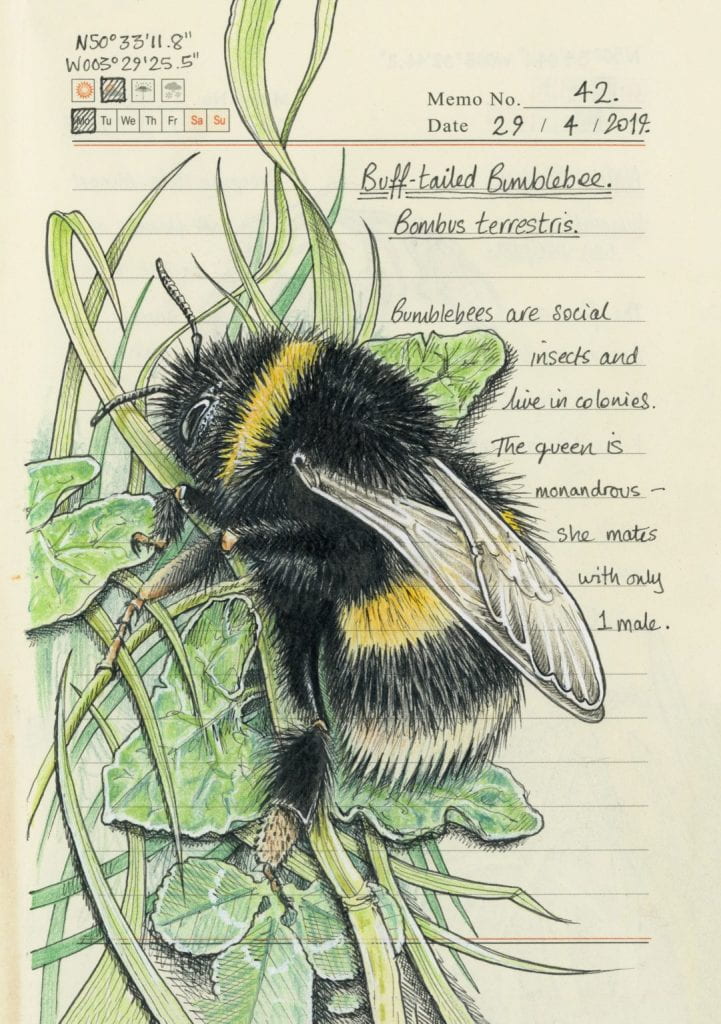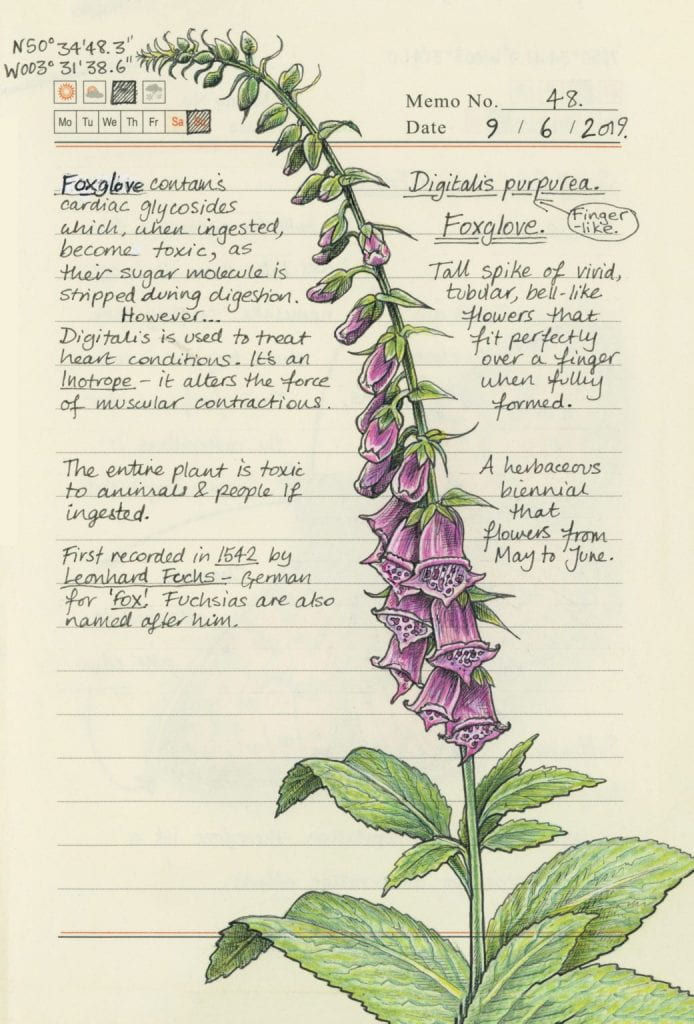Gardening books I have read
A list of the books I have read about gardening and brief thoughts. (Click on Plots 11 and 24 to get back to the blog page).
The Treeline: The last forest and the future of life on earth by Ben Rawlence *****
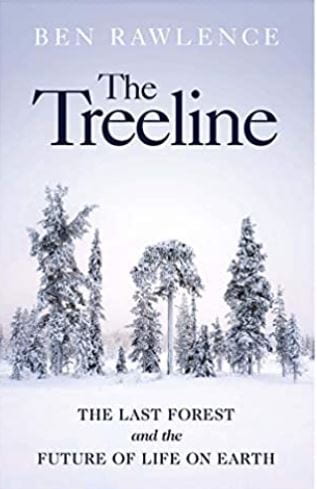
13/07/22 See the book review here.
Wild Your Garden: Create Sanctuary for Nature by The Butterfly Brothers
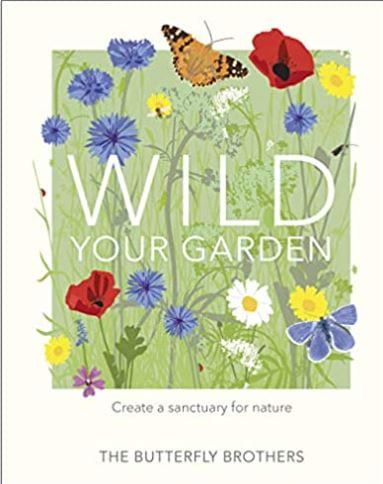
31/05/22 This is a really good book. It takes you through the various habitats that you can create for wildlife such as a pond, bog garden and native hedgerow plus some innovative solutions to items such as fencing and how to make them more wildlife friendly. There are a couple of habitats that not everyone might be able to have in their garden such as a coppice belt but there is plenty that you can.
I particularly liked the section for each type of habitat that lists who it might help such as the list for the native hedge: blackbird, dunnock, hedgehog, linnet, Orange tip butterfly, common pipistrelle, robin, whitethroat, wood mouse and yellowhammer. Who wouldn’t want those in their garden or on their allotment?
Another strength of the book is that many of the habitats fit into a ‘designed’ garden and so not all are trying to replicate that rather messy look of the natural world. There are log walls built into trellising formal ponds and altered fences all of which would look at home in a Chelsea garden. Buy this book if you want ideas about how to create different habitats and would like a more designed aesthetic.
Secrets of a Devon Wood: My nature journal by Jo Brown
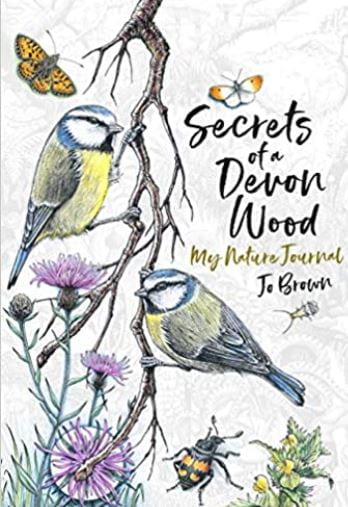
23/05/22 This is an exact copy of Jo Brown’s nature journal, errors and all although hidden by tipex, and is a very beautiful book. She is based in Teignmouth but the co-ordinates given for the locations of each plant or insect that she drew are around Luscombe Hill and Little Haldon in Bishopsteignton.
Each page is a drawing of something that she has photographed alongside snippets of information about the plant or insect. The most amazing is the last page in the journal which she found in her garden on a bramble leaf and is being investigated by East Anglia University as it appears to be an unknown species of a parasitic fungus of spiders. You never know what you might find when you turn a leaf over!
I would love to be able to create something like this, but will stick to the photographs.
We have both Buff-tailed bumble bees and foxgloves on the wildlife plot.
Bee Garden by Elke Schwarzer (Haynes Manual)
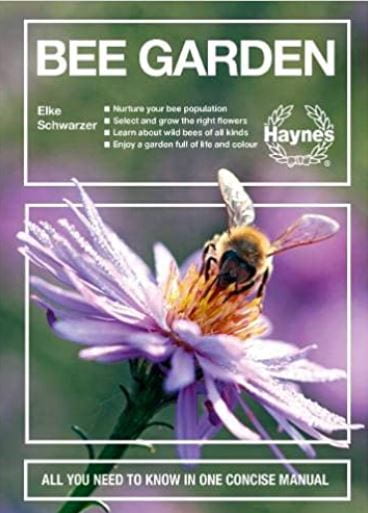
26/04/2022 This is exactly the book I need at the moment. Having read about the disappearance of insects at an alarming rate, I also learned that there were winners and losers in this catastrophe and it is the generalists that are winning. We need the specialists if we are to maintain diversity because they are adapted to the shape of the flower, they are the only insect that pollinates that type of plant or the plant is needed for a particular part of the life cycle such as egg laying. In fact 80% of pollinators are generalist and 20% specific so if you plant for the specialist pollinators, the generalists will manage. For example, a specialist bee has developed with reduced hairs in order to collect the unusual pollen from evening primrose. In fact, the presence of specialist bees indicates quality habitat.
Bee Garden takes us through specific bees and the plants that they need. For example the Tawny mining bee (Andrena fulva) which likes the flowers of currants, gooseberries, box, barberry and willow all of which we have but probably not enough. One message about pollinators is that groups of plants placed together is better than individual plants dotted around. This year, my aim is to provide more plants for the Wool carder bee. They like hairy leaves and stems and we don’t have many plants with those.
Gardens of the High Line by Piet Oudolf and Rick Darke
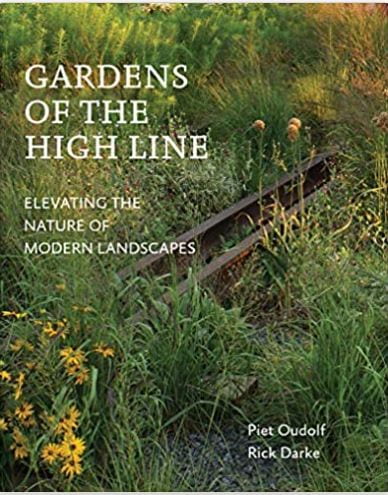
23/04/22 This is the most beautiful coffee table book with a purpose. Read the review here.
A Beautiful Obsession by Jimi Blake and Noel Kingsbury
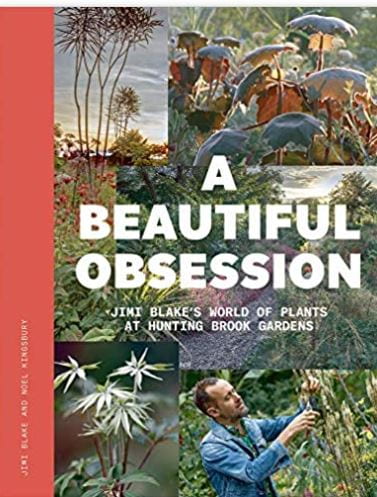
21/04/22 Read my review here about a very distinctive and different garden and its planting.
My Tiny Indoor Garden by Lia Leendertz
This is a book that showcases ways to display plants around your home; terrariums, groupings, hanging plants and trailing plants. The themes are white and wood in abundance. It is a bit disappointing that plant names are not given in full – if you liked a plant or group it won’t help you to go out and get the same sort. Not as good as Hilton Carter’s Wild Interiors.

Beth Chatto’s Green Tapestry revisited: A guide to a sustainably planted garden.
13/03/22 This is an excellent book. See the book review here.
Wild Interiors by Hilton Carter

This book is about stylish ways to use houseplants. Click on the title to see the review.
Rewild your Garden: Create a haven for birds, bees and butterflies by Frances Tophill
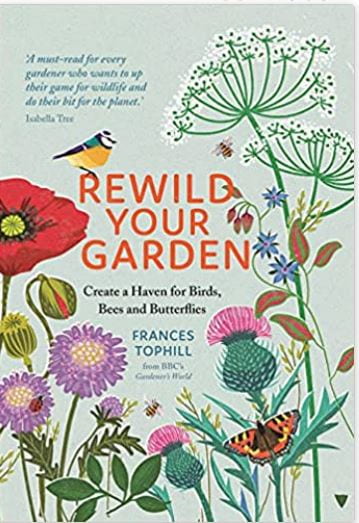
This is an excellent book for those who want to move their garden on from being just a garden and dip into rewilding. There are sections on the garden ecosystem covering everything from the soil to the layers of planting, bringing in the wildlife through different habitats and maintaining a wild garden. Chapters are punctuated by pages about unsung heroes from insects to birds letting us into the secrets of their lives and the benefits of having them in the garden. Some of the unsung heroes are plants and fungus.
There are instructions for things such as planting trees or building ponds, planting a wildflower meadow and how to make a dead hedge. What I particularly like though is the fact that the book works at three levels so for instance, after the information about soil there is a soil rewilding section that considers what you would do for the ‘traditional’ approach – dig in organic matter, the wildlife gardening approach – put organic matter on the surface of the soil and leave it and the final stage a full rewilding approach where you leave everything as it falls. This three step approach means that everyone can move a little further along the rewilding continuum no matter where you start.
This is an excellent book, small and packed with information and as Isabella tree says on the front cover
‘A must-read for every gardener who wants to up their game for wildlife and do their bit for the planet.’
Grow yourself healthy: Gardening to transform your gut health all year round by Beth Marshall
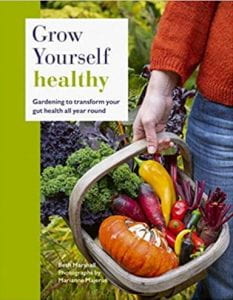
21/01/22 If you are interested in using gardening to improve your gut health then this is the book for you. It is a book that links the microbiome of the soil with plant health, with gut health and therefore our overall health. The book is divided into four sections: The science; vegetables and fruit in focus, grow-for-health projects and ferment recipes.
The vegetable sections divides the veg into families such as the alliums, the sunflower family, the beet family and then each veg has a double page spread with information about how to get the most benefits from it. For example red onions have more phytochemicals than white ones and that if you dry them in the sun this increases the phytochemicals even more. How about when to pick spinach? If you pick the leaves just before they mature they have a higher level of phytochemicals and teh antioxidant activity is much higher. It is even higher if you give it a long growing season, e.g. plant it in autumn and harvest in spring rather than winter.
The fermenting section has ferments for us to eat and ferments to improve the biome of the soil as in Korean gardening.
Wild about Weeds: Garden Design with Rebel Plants by Jack Wallington 16/01/22
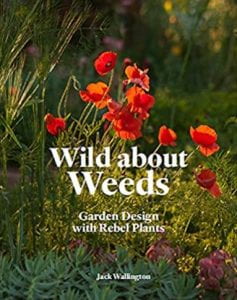
This book appears in several newspaper’s lists of the top gardening books of the year and is The Times gardening book of the year. It describes weeds as rebel plants, plants that are relative to the gardener (one woman’s weed is another’s favourite garden plant) and is a plant that reproduces uncontrollably. I was thinking of the wildlife plot when I bought this book rather than my garden and in fact I have many weeds that are described in it. The book is organised like many garden plant books – by conditions – which is unusual for books about weeds: weeds for sunny, dry borders, weeds for shady borders, weeds for ground cover and weeds for containers, pots and window boxes.
There weren’t any plants in here that I didn’t know but the book did remind me that there are some weeds that I don’t have on the wildlife plot – foxgloves, verbascum, michaelmas daisy and californian poppy all of which I can find in my own garden and transplant.
Each weed has a double page spread with important information about the conditions it prefers its invasiveness, how to control it and whether there are any cultivated varieties.
The only negative about this book is that the text is in grey rather than black, making it harder to see the words in bright light than is necessary. A small price to pay.
A Year Full of Flowers: Gardening for All Seasons by Sarah Raven
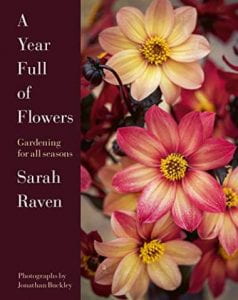
Sarah Raven has always been the queen of cut flowers for me from way back when I read her book The Bold and The Brilliant Garden in 2001, Grow Your Own Cut Garden and The Cutting Garden. This book, as the title says, is a round-the-year look at what is growing in her garden each month, the varieties of the seasonal plants she likes best and then a practical session focusing on the skills that can be utilised to grow them well that month.
When I think of Raven, I think of tulips, dahlias and over the last few year chrysanthemums so the months of April and September are ones that I dived straight into particularly to see the varieties of each plant that she grows now. But other months also show a widening palette with softer, more muted colours and roses. She has gone BIG on roses over the last few years.
The photographs by Jonathan Buckley, who has taken the photos for all her books, show her sense of colour vividly and her atmospheric garden.
If you want a colourful garden and plants to cut and would like guidance throughout the year, then this book would be perfect for you.
Charles Dowding’s Skills for Growing
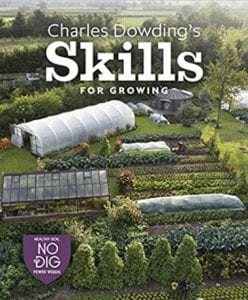
Dowding describes the key skills of growing veg as keeping the soil fertile, planning what to grow and when, knowing the best sowing and transplanting times for each veg, propagating seedlings, keeping pests away, watering, harvesting and maintaining succession and you can’t really argue with any of these. A pedant might say that knowing the best sowing and transplanting times is knowledge rather than a skill but it is something that is important as I remind myself when all the newbies in the allotment groups on Facebook have sown their onion seeds in December and want to know why they are looking so straggly and pathetic in January.
There is a lot of useful information in this book. I was just rereading the watering section and the suggestions about rewetting soil in stages after it has been very dry otherwise it just runs off – I was thinking about the tomatoes in the polytunnel here as I don’t water from September onward so when I come to put the fennel, lettuce and herbs in for winter, the soil is very, very dry. Dowding suggests wetting it in stages using more water each time.
I have all of Dowding’s books and I am not sure that there is much in here that is new for me. If, however, you are new to no-dig, this would be an excellent book to read after your first year or two growing veg.
Islands of Abandonment: Life in the post-human landscape by Cal Flyn
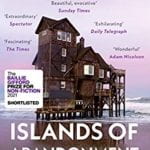
I reviewed this one on my book blog so head over there again to read my review. It is a 5 star book.
Seed to Dust: A gardener’s story by Marc Hamer

I reviewed this on my book blog so head over to read it.
Wilding; the return of nature to a British farm by Isabella Tree.
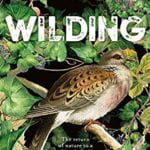
You can find my review here. In short – read it!
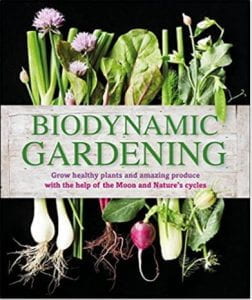
When I was doing my Permaculture Design Certificate someone mentioned to me that I sounded like I should look into biodynamic gardening. To be honest there isn’t an awful lot online, which is where I would look first, so I ordered this book because it was suggested by the Biodynamic Association.
It is an excellent book for beginners, explaining the parts which I had heard about – sowing by the moon, seed saving and preparations for the soil – plus all the other elements. Some of the ideas might be a bit ‘out there’ but I am trying to keep an open mind (I am not 100% convinced by companion planting for example) and will give it a go next year.
The book is divided into three sections – The organic way, The biodynamic approach which is a step on from being organic and then the Biodynamic garden planner.
The section I am most interested in at the moment is the part where is about the nine dynamic preparations; how to make them and when to use them. Because the book is published by Dorling Kindersley, it is visually excellent and all of the instructions have clear photographs to accompany the text. The one I am focusing on because I can make it now is the Cow pat pit. This is cow manure rotted in a pit and used as a preparation sprayed onto the soil over autumn to break down leaves quicker. I could build a pit now and put some cow manure into it ready for next year as it has to stay there half a year.
If you are a beginner with biodynamics then this is the book for you.
The Woodchip Handbook by Ben Raskin
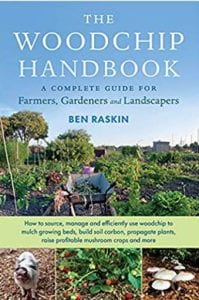
There is one thing that we have a lot of on our allotments and that is woodchip. We obviously have an arrangement with the local tree surgeons and they drop off the chippings that tree owners do not want. I use it for paths and despite what everyone says about not using it on beds because there is so much conifer in it, I do. I use it on raspberries because they grow in Scotland where the soil is damp and acidic and I grow them on dry, sandy soil that is probably neutral. So, it was with much interest that I saw The Woodchip Handbook online with good reviews.
The book looks at the use of woodchip as a mulch, a soil amendment and as a growing medium for seeds. It appears that you can basically do one of two things: use woodchips from branches that are smaller than 7cm diameter straight on the soil. This is called ramial woodchips and do not need to be rotted down before use as long as you use them straight away. The other thing that you can do with woodchips is compost them before use, probably at least a year and then use them. If you want to use woodchips to grow seedlings, you need to compost the chips for longer. Quite simple really.
You can get some nitrogen robbing if woodchips are spread on the soil because the bacteria are not really strong enough to break down the tough cell walls and so gain their nitrogen from the surrounding environment. Funghi, however, need far less nitrogen to decompose the wood but they take longer to develop. The answer to this nitrogen robbing is to compost the chips before using on the soil. These funghi are also the reason why you do not turn a woodchip pile because when you do you break the hyphae and then they have to re-establish.
The book also deals with the idea of conifer chips affecting the PH of the soil. Raskin states that it is fairly difficult to alter the ph of your soil and so composted woodchips will not affect the ph at all. Good to know.
Woodchips are a good material for a hotbed because they last longer than horse or cow manure and provide a more even heat. Some people propagate all of their seedlings on hotbeds made from pallets, 2 long and 1 wide) and here it doesn’t make any difference whether the chips are conifer or not.
This is an excellent book if you have a lot of woodchips. If you don’t, try and get some from a tree surgeon and then get the book.
Patterns in Nature: Why the natural world looks the way it does by Philip Ball
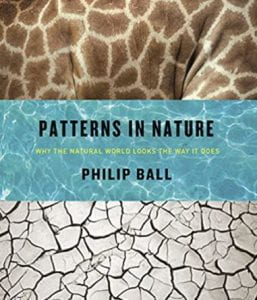
This is a beautiful book – one that explores the maths, science and beauty of nature’s patterns where often there is order behind what might be perceived as chaos. It brings together patterns which have relationships such as the ripples in wind blown sand and a zebra’s stripes, bubbles and cells in a bee hive and veins in a leaf and the fascinating dragon’s blood trees. I love it! This book fits with module 4 of the permaculture design certificate Patterns.
The Permaculture Garden by Graham Bell
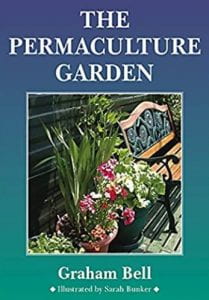
This book is about using permaculture ethics and principles in a garden rather than a small-holding or farm. There are chapters such as what can I do in a day?, techniques to grow plants well, water in the garden, soil and adding features. All the tools of permaculture are in this book – ways of dealing with grey water, forest gardening, air drying of clothes, building your own worm composting bin and much more. If you are interested in developing a more sustainable life style and garden, this book is for you.
No Dig Gardening: From weeds to vegetables easily and quickly by Charles Dowding.
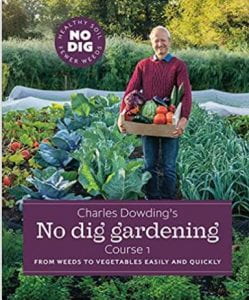
I have read all of Charles Dowding’s books – I moved to a no-dig approach having read them and visited his garden. The book is a paper version of his first online course which I haven’t taken, deciding that this was a much more financially savvy way to learn more.
The book focuses on introducing no-dig with a brief history, comparing dig and no-dig, laying out paths and beds, weeds and fertility, compost and soil. What comes over really clearly is how Dowding undertakes lots of trials and is always looking for better ways to do things, everything from dig to no-dig to commercial fertiliser vs. home made compost. I enjoyed the planting plan for the Small Garden showing what follows on from each planting and the compost section was detailed. This is appropriate because the success of no-dig relies upon compost and many people, like me, struggle to make enough for our needs. If you are a fan of no-dig or are interested in finding out more about it, this is the book for you.
